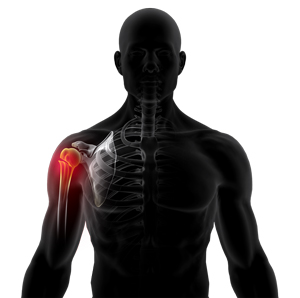
What is a Shoulder Fracture?
A break in the bone that makes up the shoulder joint is called a shoulder fracture. The clavicle (collarbone) and end of the humerus (upper arm bone) closest to the shoulder are the bones that usually are fractured. The scapula, or shoulder blade, is not easily fractured because of its protective cover of surrounding muscles and chest tissue.
Causes
Clavicle and humerus fractures can occur by a direct hit from a motor vehicle accident, collision or fall. A fracture of the scapula can occur by high-energy trauma during an accident from a high-speed motor vehicle.
Signs and Symptoms
The common signs and symptoms may include:
- Pain
- Swelling
- Bruising
- Difficulty in lifting the arm
- Numbness, tingling or coldness of the hand and forearm
- A popping sound also referred to as crepitus, heard or felt at the time of the fracture
Diagnosis
A shoulder fracture is usually diagnosed based on a thorough physical examination, and imaging studies such as X-rays and CT scans.
Treatment
The treatment for a shoulder fracture is based on the type of fracture. Treatment can include either non-surgical or surgical methods.
Clavicle Fracture Care
A broken clavicle usually heals without surgery, but if the bone ends have shifted out of place (displaced), surgery may be recommended to align the bone ends and hold them stable during healing.
Surgery for clavicle fractures may be considered in the following circumstances:
- Multiple fractures
- Compound (open) fractures
- Fractures associated with nerve or blood vessel damage and/or scapula fracture
- Overlapping of the broken ends of bone (shortened clavicle)
Plates and Screws
During this procedure, your surgeon will reposition the broken bone ends into their normal position and then use special screws or metal plates to hold the bone fragments in place. These plates and screws are usually left in the bone. If they cause irritation, they can be removed after the fracture heals.
Scapular Fracture Care
Most scapular fractures are not significantly displaced due to the strong supporting soft tissue structures surrounding it. Therefore, most scapular fractures are treated conservatively with a sling initially for comfort, followed by early motion to reduce the risk of stiffness. They usually heal without affecting shoulder movement.
Conservative Treatment
Conservative treatment options for scapula fractures include:
- Immobilization: A sling is used for comfort and to support the shoulder to allow healing to take place. This is usually worn for about 3-6 weeks depending on the type of fracture and how well you heal.
- Physical Therapy: Early progressive range-of-motion exercises are essential in restoring full shoulder function. Your physician may refer you to a physical therapist for instruction on proper exercises and early motion of the shoulder to prevent complications.
Surgical Treatment for Scapula Fracture
Fractures of the scapula involving the neck or glenoid (cavity) or with severe displacement have been associated with poor outcomes when treated non-operatively and may require surgical intervention to realign the bones properly to restore function and pain-free range of motion.
Proximal Humerus Fracture Care
Most proximal humerus fractures are minimally displaced and can be treated with conservative approaches such as the use of a sling to immobilize the shoulder and early physical therapy to improve the functional outcome. Surgery may be necessary for displaced fractures. The multiple fragments are fixed with plates, screws or a rod, and in severe cases, shoulder replacement surgery is performed.





